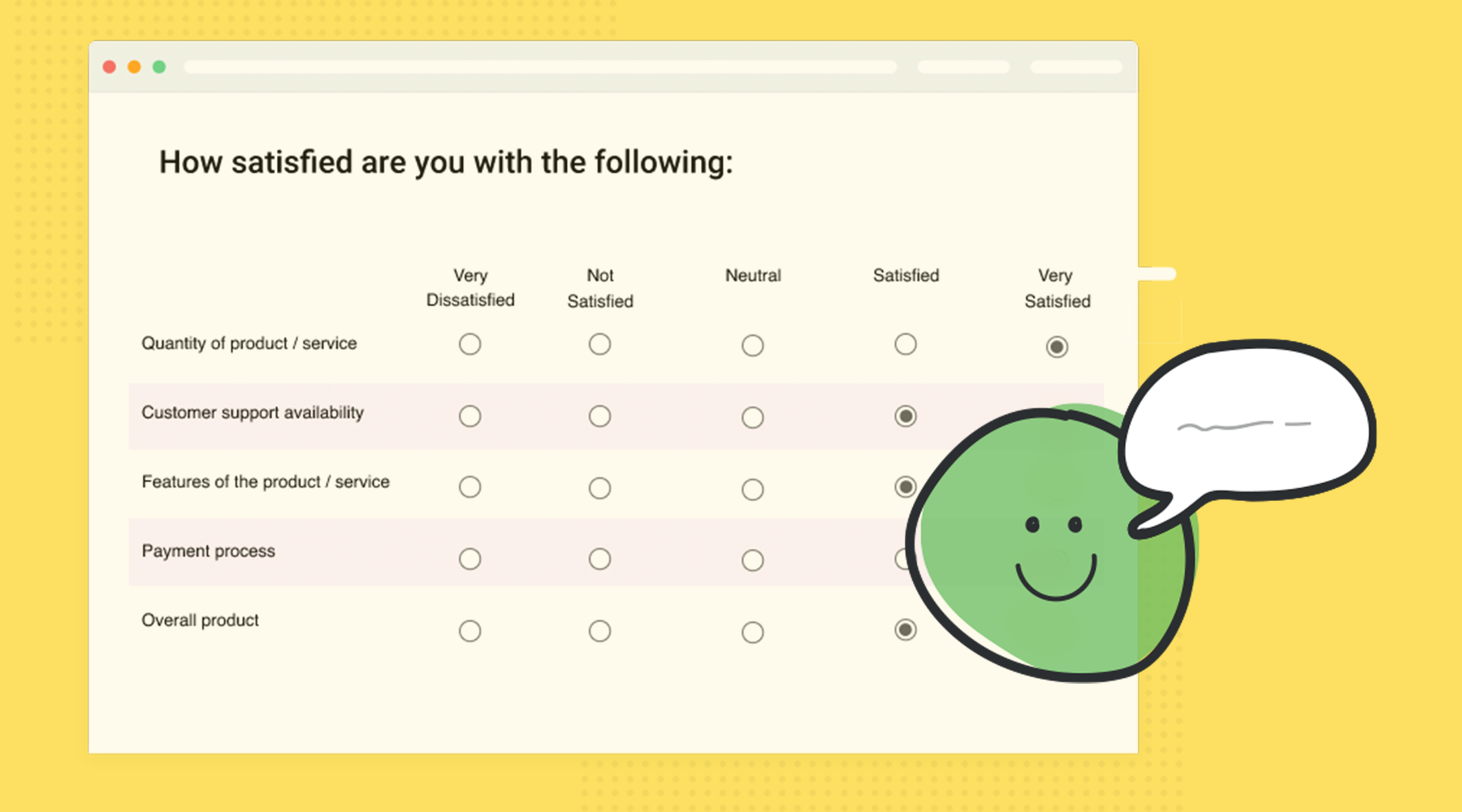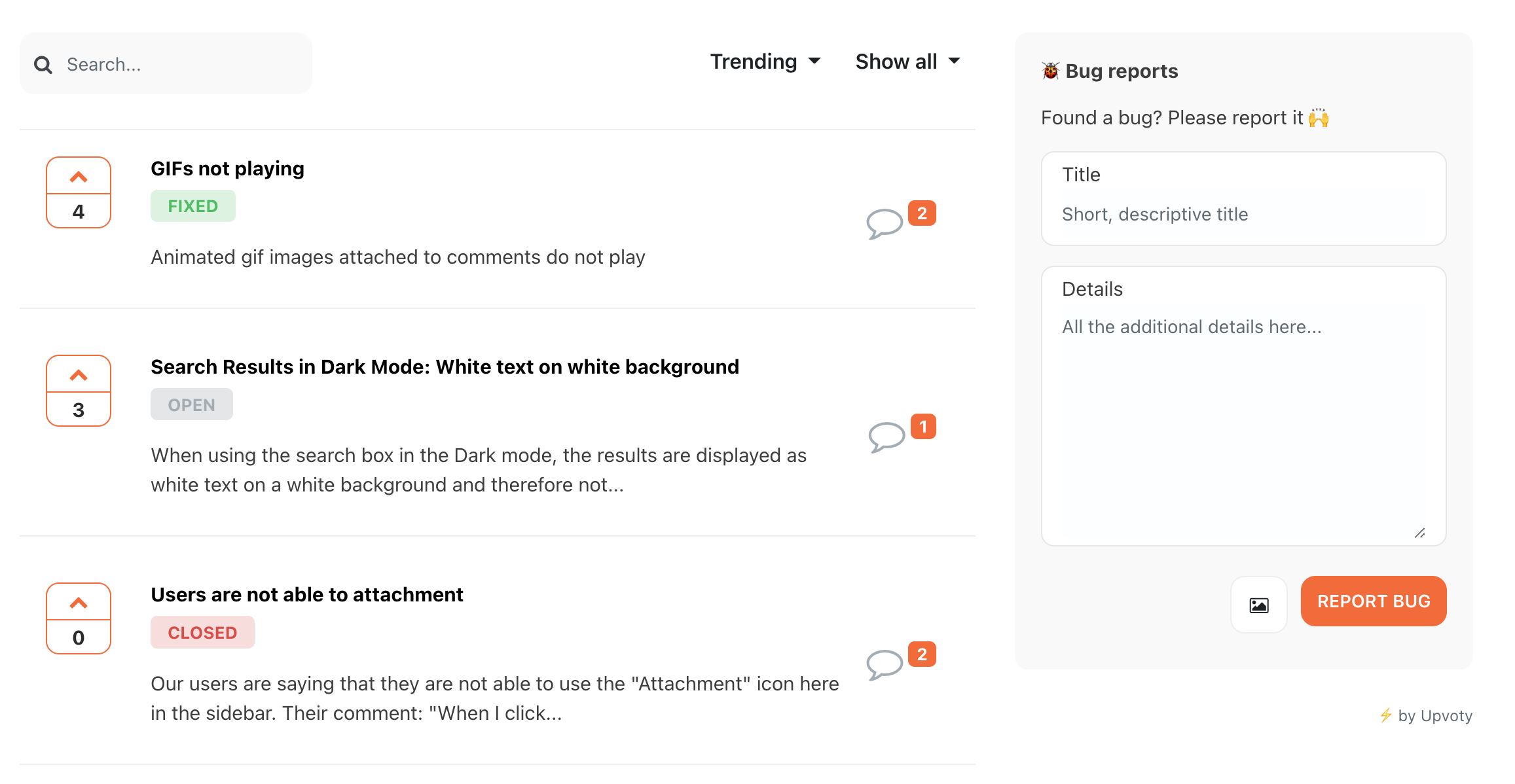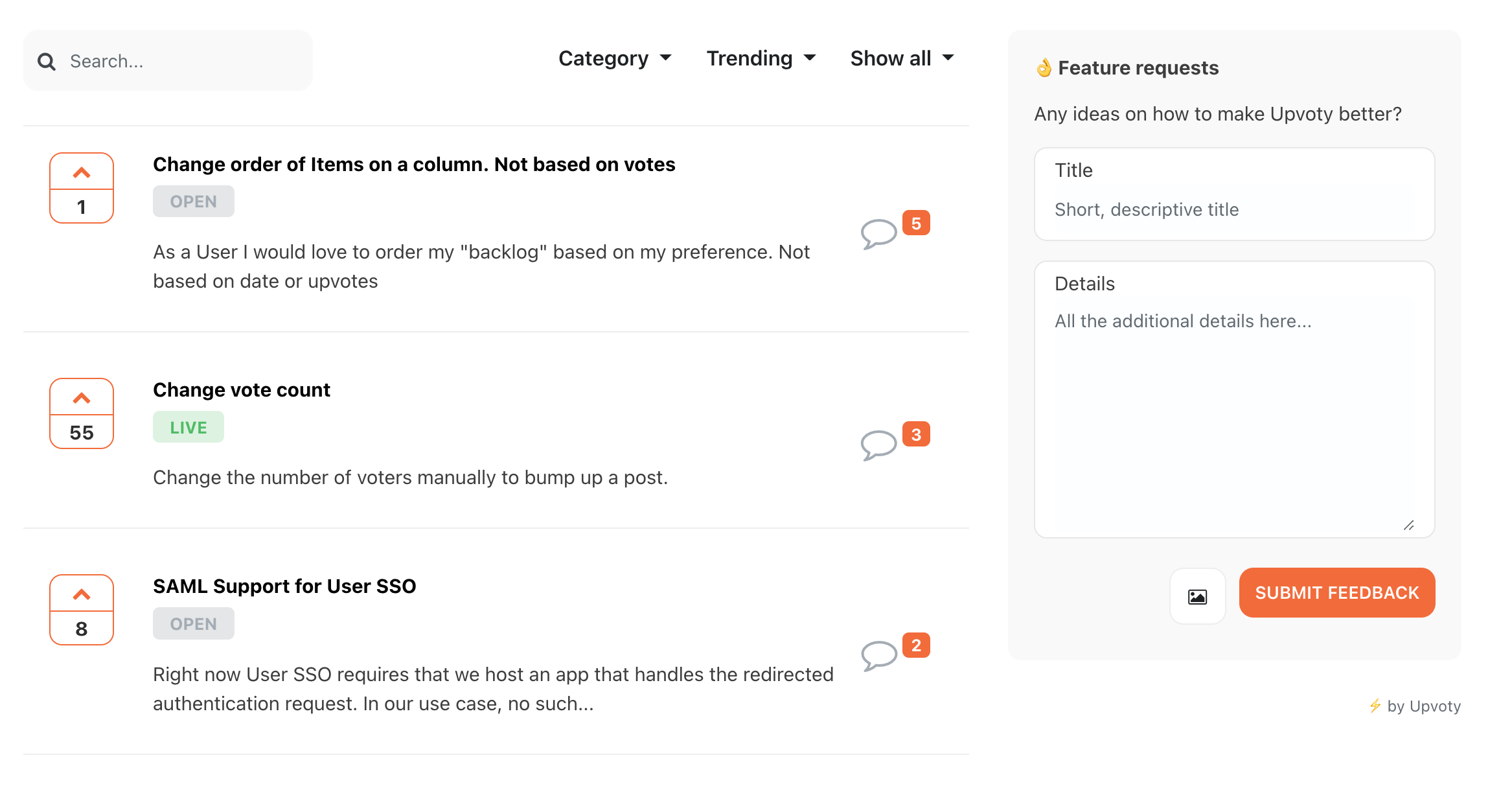Types of User Feedback You Should Collect Today
User feedback stays at the core of product development and business growth. You can’t rely on your product vision entirely. Staying in touch with reality and connecting with your users’ needs is crucial to making the right product decisions.According to Jennifer Li, Investment Partner at Andreessen Horowitz, “User research goes hand in hand with product design. Since there’s never a “finished” product, user feedback is indispensable for ongoing product improvements and new product launches.”Collecting, analyzing, and engaging with feedback will help nurture two-way communication with users, building long-lasting connections. And that’s so much needed, especially if you want to go beyond the functional and connect emotionally with your prospects and customers.You have to remember, though, that user feedback is an umbrella term that includes multiple types of interactions. That’s why you should be highly purposeful and strategic when deciding which type of user feedback to consider.
Differentiating Between Multiple Types of User Feedback
 User feedback includes different types of company or product-related comments, evaluations, and reactions from prospects or customers.Li highlights, “Product feedback comes in different formats and mediums, ranging from low volume, high information density interviews to high volume, low information density public product reviews or NPS surveys.”In other words, user feedback can be anything from survey answers to support tickets. However, you can’t treat them all the same, as each user feedback type has a specific goal and encodes multiple aspects, such as:
User feedback includes different types of company or product-related comments, evaluations, and reactions from prospects or customers.Li highlights, “Product feedback comes in different formats and mediums, ranging from low volume, high information density interviews to high volume, low information density public product reviews or NPS surveys.”In other words, user feedback can be anything from survey answers to support tickets. However, you can’t treat them all the same, as each user feedback type has a specific goal and encodes multiple aspects, such as:
→ Department
User feedback extends beyond the product to your marketing, sales, and customer success teams.Li notes, “To ship a successful product, the research process requires input and participation from multiple organizations/ functions, such as product design, engineering, marketing, data science — not to mention sales and customer success, who feed data to product teams.”The department collecting user feedback will determine its type and goal. For example:
- Your marketing team will collect user feedback from trial or free plan users to identify ways of transforming them into paying customers.
- The sales department will gather user feedback to identify product-related objections and build a strong narrative for their meetings with potential enterprise customers.
- The customer success department will collect user feedback to help people achieve their goals and subsequently strengthen their up-sell or cross-sell strategies.
- Finally, your product or engineering department will collect user feedback to identify people’s needs and improve the product.
Each team has different goals when it comes to engaging with users. That’s why the types of user feedback will vary from department to department.
→ Timing
 This aspect answers the question, “When to collect a specific type of user feedback?” For example, there’s no point in collecting information on overall goal completion at the beginning of a user’s experience with your platform.
This aspect answers the question, “When to collect a specific type of user feedback?” For example, there’s no point in collecting information on overall goal completion at the beginning of a user’s experience with your platform.
→ Collection method
This element answers the question, “How to collect a specific type of user feedback?” In some cases, user feedback comes in the form of surveys. This can be a comment, request, or ticket in other cases.
→ Tools for feedback collection
The collection method will determine your tools to gather user feedback.For example, Upvoty allows you to create feedback boards to collect feature requests or bug reports. On the other hand, tools such as SurveyMonkey or Typeform will help you run surveys.
On the other hand, tools such as SurveyMonkey or Typeform will help you run surveys.
Types of User Feedback To Consider
 The above elements create the optimal context for collecting and analyzing the feedback data. With this in mind, let’s uncover the user feedback types you should collect:
The above elements create the optimal context for collecting and analyzing the feedback data. With this in mind, let’s uncover the user feedback types you should collect:
→ Net Promoter Score (NPS)
- Goal: Evaluate your users’ satisfaction and measure their loyalty, identifying the percentage of people willing to recommend your platform to friends and co-workers.
- Department: Marketing and Product
- Timing: You should send the NPS score within the first 7 to 30 days after the user’s initial interaction with your platform. Then, you can send these surveys quarterly to evaluate whether the users’ satisfaction has changed.
- Method: In-app or email survey
- Tools: You can use any platform for survey building.
The Net Promoter Score asks a straightforward question: “On a scale of 0 to 10, how likely are you to recommend our software to a friend or colleague?”Depending on people’s grades, you can identify three types of users:
- Detractors (0 to 6): These people are probably unhappy with your product and may keep their friends and co-workers from using it.
- Passive (7 and 8): Usually, these users won’t talk badly about your product. However, they won’t recommend it either.
- Promoters (9 and 10): These users are satisfied with your product and will nudge others to try it.
The NPS formula is simple:NPS = % of promoters - % of detractorsA bad NPS score is 25 or below. A good NPS score ranges from 30 to 40, while a score above 50 is considered excellent.
→ User Research Surveys

- Goal: Identify people’s attitudes, preferences, and challenges related to their job-to-be-done and your platform.
- Department: Marketing and Sales
- Timing: You can collect this type of user feedback at any time.
- Method: In-app or email survey
- Tools: You can use any platform for survey building.
There’s a wide variety of user research surveys. It all depends on the subject you want to focus on. For example, you can run surveys to identify:
- People’s work-related challenges and wanted results
- Alternatives people were looking at before starting to use your product
- What made users choose your product
- And more
Subsequently, you can transform these insights into actionable steps for improving your marketing or sales strategy. For example, these insights can help your:
- Marketing team to enhance communication and branding.
- Sales team to identify possible objections prospects may have and deal with them efficiently.
The content and the format of your user research surveys depend on the department running them and their primary purpose.
→ Customer Satisfaction Score (CSAT)
- Goal: Identity how happy or satisfied your users are with your product at a given moment.
- Department: Customer Success
- Timing: According to Help Scout, “Traditionally, CSAT is used to measure feedback with immediacy, but you can also measure satisfaction over time. If you would like to measure satisfaction over time, you can choose to send CSAT surveys quarterly.”
- Method: In-app or email survey
- Tools: You can use any platform for survey building.
The CSAT helps you evaluate a wide range of elements, such as people’s satisfaction with the following:
- Purchase experience
- Email support
- Website experience
- Any event or interaction with a company rep
- Newsletter
- And more
CSAT is expressed as a percentage and is calculated using the formula:% of Satisfied Customers = (Number of Satisfied Customers / Number of Survey Respondents) x 100To get your users’ satisfaction level, you can send them an answer option on a scale of 1 (very dissatisfied) to 5 (very satisfied).
→ Goal Completion Rate (GCR)
- Goal: Know how many users have accomplished their goals by using your product.
- Department: Customer Success
- Timing: You can trigger the GCR survey whenever users want to navigate away from your platform.
- Method: In-app or email survey
- Tools: You can use any platform for survey building.
The GCR survey is quite straightforward, asking users whether they achieved their goals.You may add a second, open-ended question in case people answer “No.” For example, if users reply “No” to your initial question, you can ask, “Why not?” This will help understand what keeps people from achieving their goals.
→ Customer Support Feedback
- Goal: Evaluate the work of your customer support team and keep your users happy.
- Department: Customer Success
- Timing: You should activate this survey right after a support interaction.
- Method: In-app or email survey
- Tools: You can use any platform for survey building.
Apart from evaluating the work of your support team, this type of feedback will help you identify unhappy clients and solve the issues they may experience.
→ Customer Effort Score (CES)
- Goal: Assess the difficulty level people experience when interacting with your business and platform.
- Department: Sales, Customer Success, and Product
- Timing: You can activate this survey right after an event or interaction with someone from your team.
- Method: In-app or email survey
- Tools: You can use any other platform for survey building.
According to Qualtrics, “Customer Effort Score (CES) is a single-item metric that measures how much effort a customer has to exert to get an issue resolved, a request fulfilled, a product purchased/returned or a question answered.”For example, if people experience difficulties paying for a product plan, you may want to assess the purchasing experience of your sales team.On the other hand, if people have issues learning how to use your product, you may want to discuss it with your customer success team or review the platform design with your product team.
→ Complaints
- Goal: Stay updated with any issues that may displease your users.
- Department: Product
- Timing: It depends on your users. They’ll reach out to you whenever they have an issue.
- Method: Via feedback boards, forums, product communities, or social media
- Tools: You can activate the Upvoty user feedback boards, allowing people to leave their comments. Also, you can use platforms for community building.
Although it’s a hard pill to swallow, you have to be open to complaints. In some cases, users may be frustrated with easily solved issues. In other cases, they may have higher expectations than you initially set.Either way, you must listen to your users and react to existing complaints by helping them navigate specific frustrations.
→ Bug Fixes

- Goal: Make sure your product works well and help your users to overcome any platform-related issues.
- Department: Product
- Timing: It depends on your users. They’ll reach out to you whenever they have a problem.
- Method: Via feedback boards, forums, or product communities
- Tools: Use Upvoty and enable users to report product-related bugs via feedback dashboards.
You can’t always be aware of possible software bugs. So collecting bug fix requests is the best way to improve your product and gain your users’ trust.
→ Feature Requests

- Goal: Improve your platform and keep it up to date with your users’ needs.
- Department: Product
- Timing: It depends on your users. They’ll reach out to you whenever they need a specific feature.
- Method: Via feedback boards, forums, or product communities
- Tools: Use Upvoty and enable users to request or upvote new features via feedback dashboards.
Your software grows based on a co-creative process. You can’t build and keep developing a platform without knowing your users’ needs and requirements. Also, collecting feature requests is the best way to ensure that people will keep using your product.
Final thoughts
“Should I collect all types of user feedback?” we hear you asking. The question is, “No.” In most cases, collecting all types of user feedback is almost impossible. Moreover, confusing your users with multiple surveys and questions is not recommended.That’s why you need to be strategic when deciding which types of user feedback to collect. And this strategic approach derives from your company goals. In any case, creating feedback boards for your users and giving them a voice is crucial. That’s the only way to gain people’s trust and have them participate in improving your product and growing your business.

